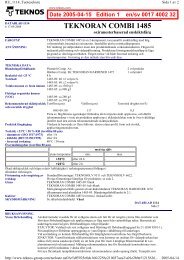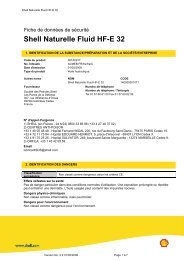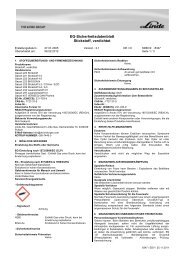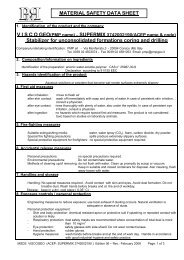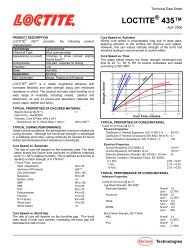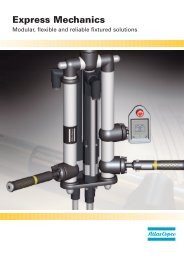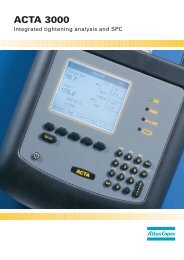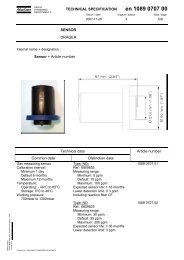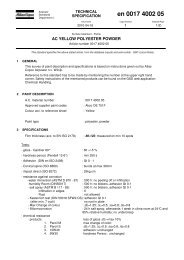Ergonomics - Atlas Copco
Ergonomics - Atlas Copco
Ergonomics - Atlas Copco
You also want an ePaper? Increase the reach of your titles
YUMPU automatically turns print PDFs into web optimized ePapers that Google loves.
20<br />
The arm sling as a preventive measure<br />
When there is a risk of prolonged static<br />
load on the shoulder region and the work is<br />
performed within a wider radius so that the<br />
use of arm-rests is not feasible, arm slings<br />
are sometimes used. The lift force of an<br />
arm sling should be individually adjusted<br />
to about 20% of the total arm weight (about<br />
5% of the total body weight). The introduc-<br />
tion of arm slings should not interfere with<br />
the task being performed. If this is the case,<br />
other alternatives should be explored.<br />
Although more beneficial for operators<br />
with musculoskeletal symptoms, the arm<br />
sling should generally be regarded as a<br />
preventive measure rather than as an aid<br />
to rehabilitation.<br />
Weight balancers reduce fatigue<br />
The weight of a hand tool, particularly<br />
a power tool, imposes limitations on the<br />
length of time that an operator can per-<br />
form the task, while reducing the degree of<br />
precision that the operator can achieve. In<br />
general, any tool weighing more than 2.5 kg<br />
that has to be operated while supported by<br />
the arms, and that has to be held out from<br />
the body in an awkward posture should be<br />
provided with a “weight balancer”.<br />
Arm slings compensate for the weight of the arms,<br />
and reduce tension in the shoulder-neck area.



